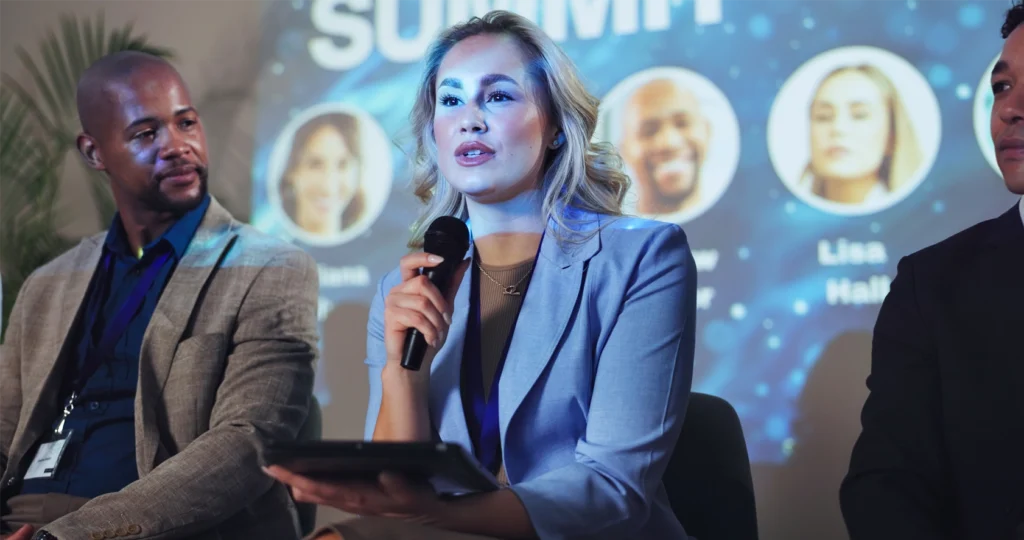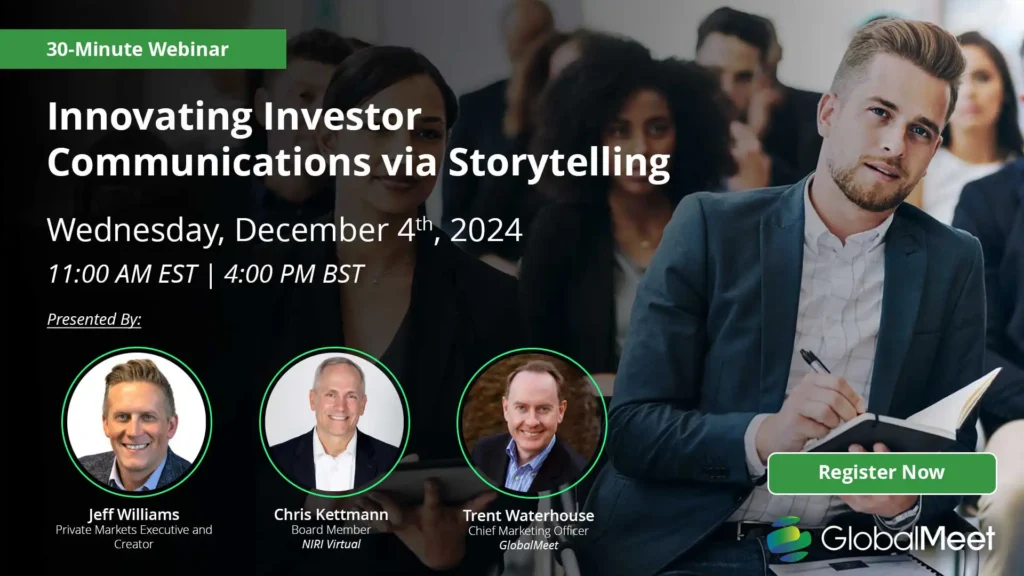
From “Fake Paper” to Real Impact: Making Digital and Hybrid Events Feel Tangible
- by GlobalMeet Blog Team
- ,
In today’s rapidly evolving events landscape, the rise of digital and hybrid events has introduced unparalleled opportunities for global connection and innovation. Yet, a critical challenge persists: how do we make these virtual experiences feel genuine, impactful, and tangible — rather than just another “fake paper” placeholder in the world of event engagement? Here’s a deep dive into strategies that transform virtual and hybrid events from superficial to significant.
Understanding the "Fake Paper" Phenomenon
The term “fake paper” captures a sentiment many attendees feel during digital events. Virtual handshakes lack warmth; screens replace the spontaneity of real-world encounters. In this context, digital events can feel intangible, even insignificant. Much like fake paper — an empty simulation of the real thing — they run the risk of being overlooked or undervalued.
This sense of superficiality stems from the lack of depth and authenticity. Attendees often crave more than mere visual or auditory cues; they miss the tactile, emotional aspects of traditional events. The weight of a name tag, the excitement of mingling over coffee, the dynamic exchanges in hallway chats, and the shared energy of applause create memories and connections that stay with attendees long after the event ends. Without these layers of experience, digital events risk becoming disposable, a blur of screens rather than meaningful moments.
To bridge this gap, planners must look beyond the confines of technology as a transactional medium and strive to make digital and hybrid events feel personal, emotionally resonant, and undeniably real. This requires thoughtful integration of tools and strategies that prioritize meaningful interactions, as well as a commitment to creating shared experiences.
Creating Depth and Authenticity
To move beyond the superficial, event organizers must prioritize depth and authenticity. Here are several key approaches:
Leveraging Technology for Tangible Experiences
Advancements in technology allow digital events to simulate real-world sensations and interactions.
Virtual Reality (VR) and Augmented Reality (AR): These tools create immersive environments where attendees can explore virtual venues, engage with booths, or attend breakout sessions as if they were physically present. These technologies replace static 2D experiences with dynamic, exploratory spaces, making attendees feel part of the action.
Physical-to-Digital Bridges: Send physical event kits with tactile items — such as branded merchandise, snacks, tools for interactive workshops, or even sensory objects that tie into the event theme — ahead of the event. The anticipation and engagement with these kits can anchor the digital experience in something tangible.
Sensory Technology: Incorporate haptics or audio-visual enhancements to engage multiple senses, such as vibration feedback during an AR experience or 3D audio that simulates realistic spatial soundscapes. Sensory depth enhances immersion and makes digital interactions memorable.
Gamification and Interactivity
Gamification transforms passive participation into active engagement, fostering a sense of fun and competition that attendees can enjoy across both digital and physical spaces.
- Introduce leaderboards, challenges, or live quizzes that reward attendees with incentives such as event-branded prizes or charitable donations in their name.
- Utilize tools like scavenger hunts that connect physical and virtual elements. For instance, attendees can unlock clues in an app by completing both on-site and digital activities.
- Implement virtual escape rooms or trivia tournaments, encouraging collaboration and interaction. Structured games make every moment of participation feel purposeful.
By incorporating such elements, digital events can cultivate camaraderie and creativity, transforming isolated experiences into interactive and enjoyable ones.
Bridging the Digital-Physical Divide
Hybrid events offer a natural opportunity to connect the digital and physical realms. To maximize impact. Creating seamless hybrid experiences requires attention to both logistics and user experience.
- Utilize simultaneous live streams and interactive video conferencing to promote real-time collaboration. Ensure that the quality of engagement is consistent for both audiences, minimizing feelings of exclusion.
- Organize shared experiences, such as interactive keynote sessions, where attendees across locations can contribute questions, vote in polls, or see their input reflected instantly. Consider unifying platforms that handle both in-person and virtual audiences, reducing friction.
- Design interactive elements, such as custom event apps or on-site VR booths, that enable remote attendees to participate in activities like live product demonstrations.
Networking That Feels Real
Networking is a cornerstone of any event, yet virtual networking often feels contrived. To combat this:
- Leverage AI tools to match attendees based on shared interests, backgrounds, or career goals, enabling curated one-on-one meetings that mimic chance encounters.
- Host casual networking sessions using structured formats, such as speed networking, peer-to-peer interviews, or small topic-focused breakout discussions. These allow for targeted, meaningful conversations.
- Create virtual communal spaces, such as lounges designed with interactive widgets like avatar-based games or opportunities for co-creating whiteboard ideas, to mimic the lively, unstructured flow of real-world mingling.
Hybrid networking succeeds when it enables attendees to forge genuine connections—whether they’re on-site or online.
Buzzworthy Trends Shaping Virtual Engagement
To elevate digital and hybrid events from functional to exceptional, event planners must embrace emerging trends:
Personalization
Gone are the days of one-size-fits-all content. Attendees now expect tailored experiences that make them feel seen and valued.
- Use registration data to create customized agendas tailored to individual interests, skill levels, or learning goals. Provide options to personalize even within sessions, such as advanced breakout rooms for interactive discussions.
- Deliver personalized follow-ups, such as curated session recommendations, actionable resources, and targeted networking opportunities. When attendees feel directly acknowledged, engagement deepens.
Sustainability
Virtual and hybrid events already reduce carbon footprints by eliminating travel requirements, but planners can amplify the sustainable impact:
- Replace physical collateral with visually appealing digital brochures and handouts.
- Opt for green hosting services that prioritize renewable energy, and highlight these efforts in event messaging.
- Include sustainability discussions, such as workshops on actionable climate initiatives, fostering awareness among attendees.
Immersive Technology
Cutting-edge technology takes engagement to the next level.
- Invest in virtual platforms that replicate real-world dynamics, creating cohesive event universes with lifelike graphics, textures, and environments.
- Incorporate holographic displays that make it possible for speakers or performers to appear in multiple locations simultaneously, reducing travel while still delivering a personal touch.
- Use AI-driven interactions, such as conversational chatbots or real-time content recommendations, that mimic human-like spontaneity.
Boosting Engagement Through Feedback and Metrics
Engagement is the metric that separates “fake paper” events from impactful ones. An iterative approach informed by data ensures events evolve to feel increasingly authentic and resonant.
- Analyze metrics such as session attendance, interaction rates, social media mentions, and post-event survey data. By integrating these findings, planners can understand what worked well and what requires improvement.
- Monitor engagement trends within virtual platforms. Heatmaps tracking movement or clicks can reveal how audiences engage with interactive content, indicating which areas felt most dynamic.
- Gather qualitative feedback via direct interviews or focus groups. Personal anecdotes and observations often uncover emotional insights that raw data might miss.
Building future events on these learnings ensures continuous enhancement of their tangibility and depth.
Pitfalls to Avoid
To ensure digital and hybrid events truly resonate:
Avoid Overcomplicating Technology:
Complex platforms can frustrate users. Prioritize intuitive tools over flashy but confusing interfaces, especially when engaging diverse audiences.
Don’t Skimp on Production Quality:
Subpar audio, video, or unstable internet streams can undermine credibility. High production values signal professionalism and enhance attendee confidence.
Resist Ignoring Personal Connection:
Technology should enhance, not replace, human interaction. Create opportunities for empathy, surprise, and genuine moments of shared enthusiasm.
Conclusion
While digital and hybrid events risk feeling intangible, event planners possess powerful tools to create authentic, impactful experiences. By combining technological innovation, interactivity, and a human-centric approach, you can bridge the gap between the digital and physical, turning “fake paper” into something profoundly meaningful. The future of events lies in their ability to feel real — wherever attendees may be. Through thoughtful design, innovation, and personalization, digital and hybrid events can leave lasting impressions that matter.




